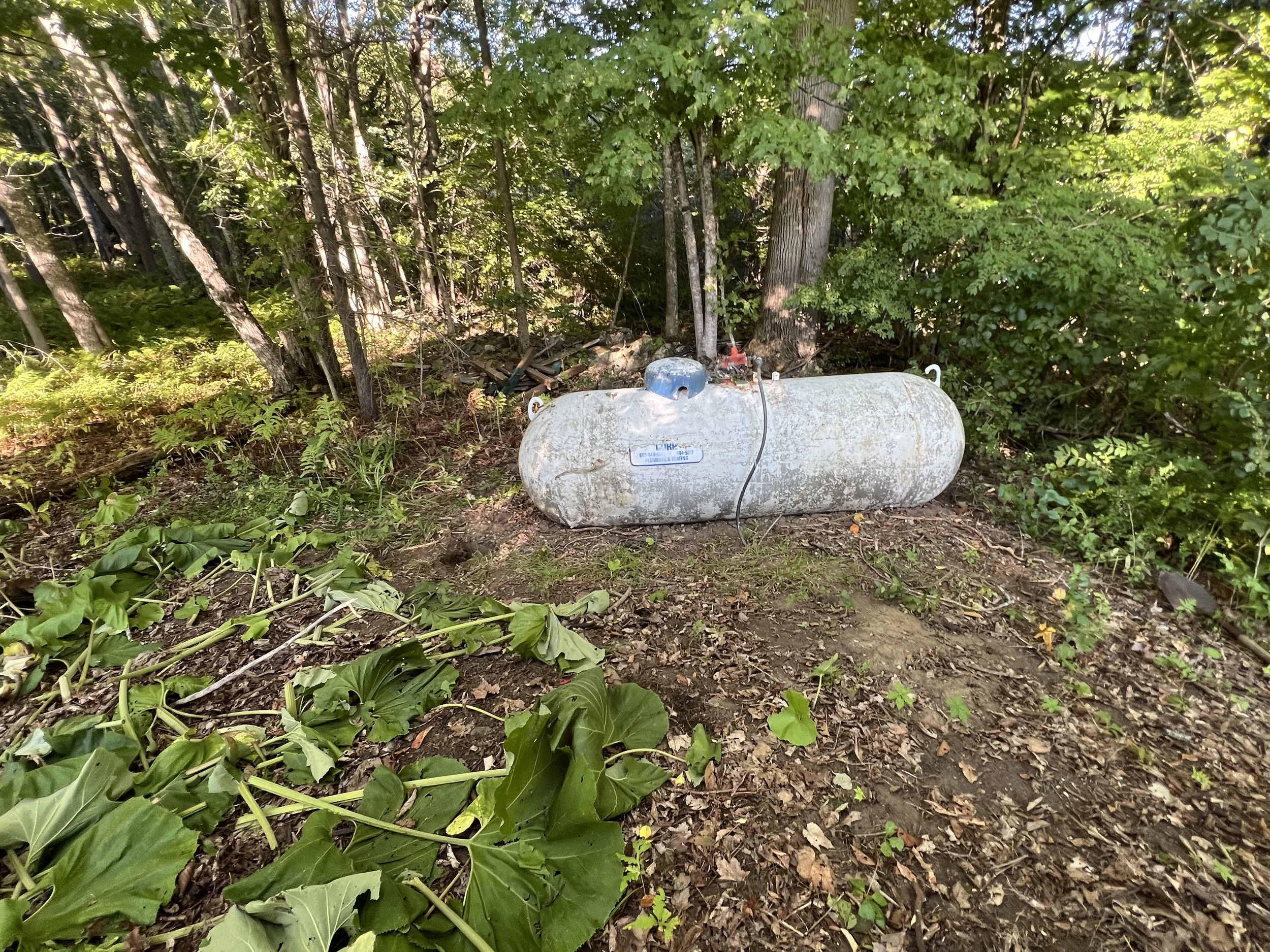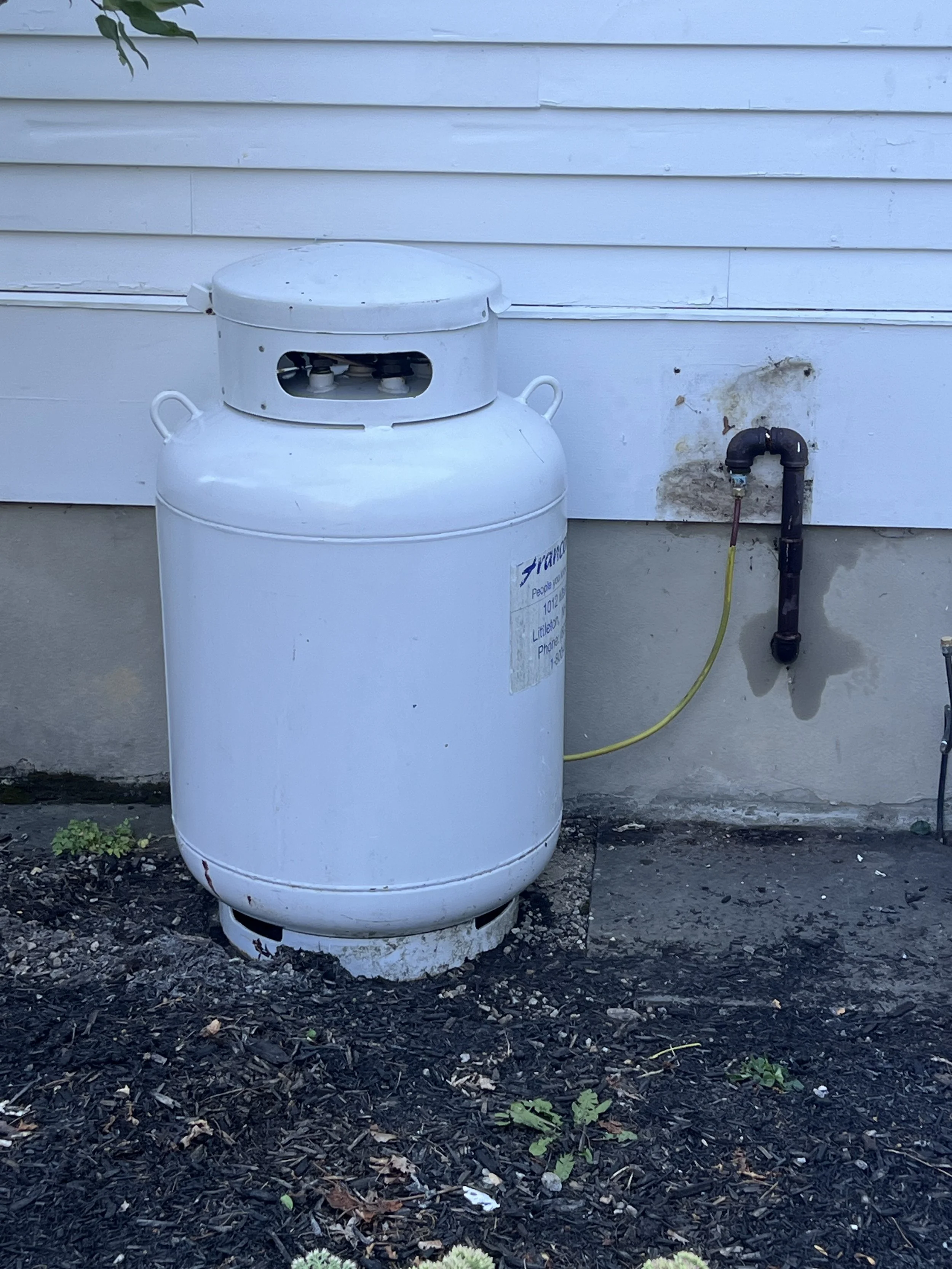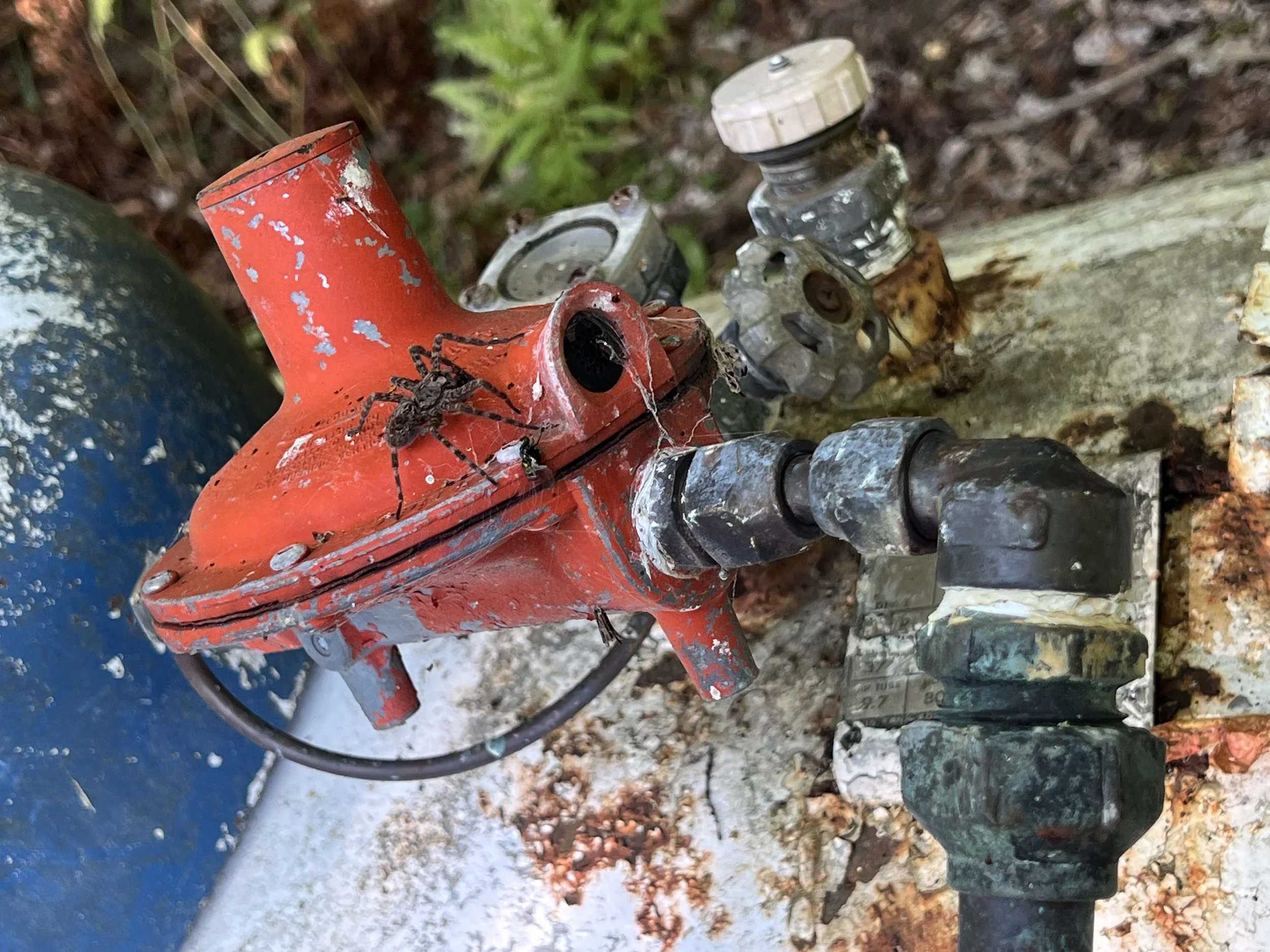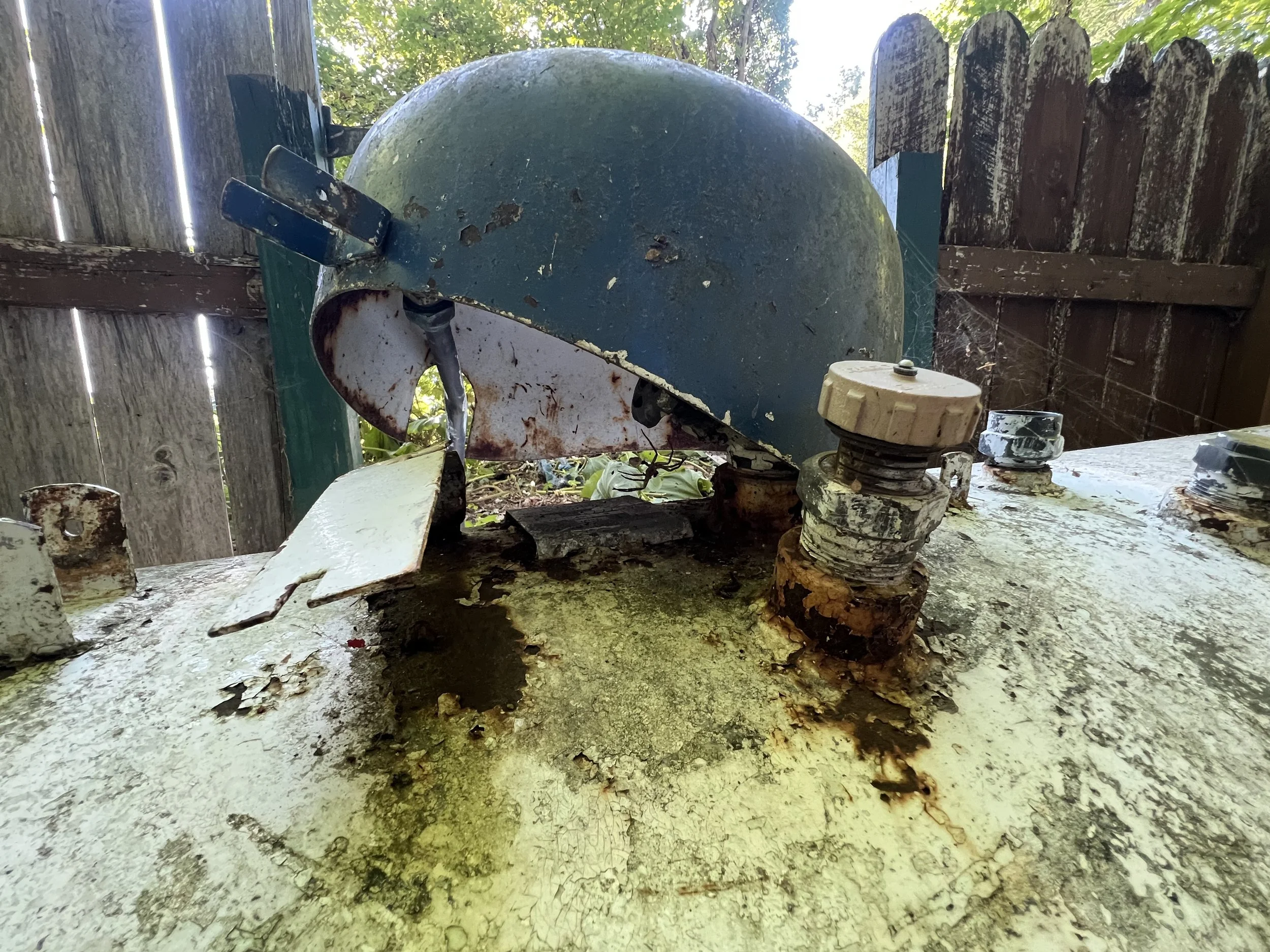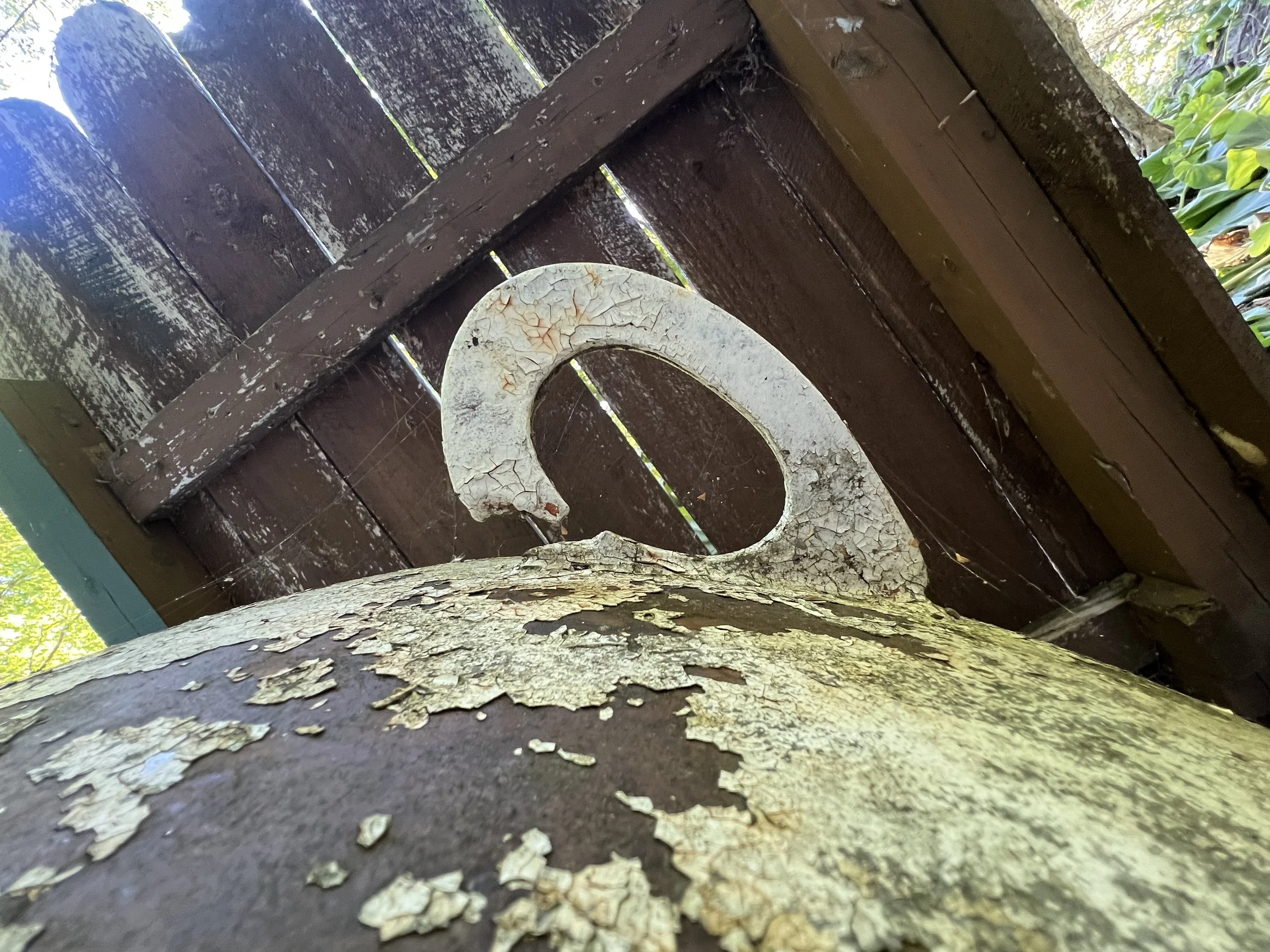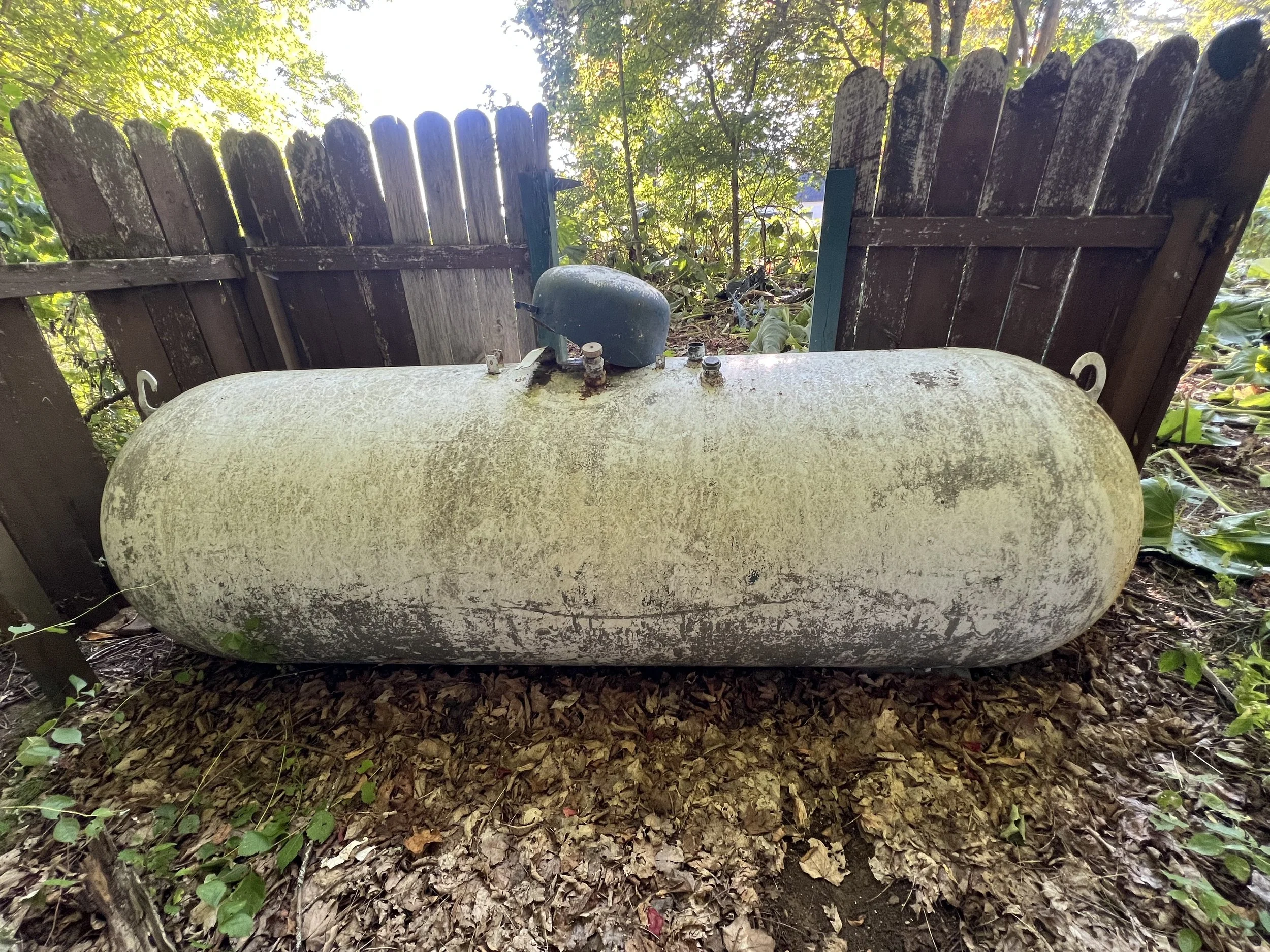Relocating Propane Tanks
I knew the propane system was in bad shape. Not acutely dangerous necessarily, but infrastructure that was clearly well beyond its intended service life. The kind of setup that everyone knew was bad, but no one wanted to touch. This fall, I finally started the process of fixing it.
The Options
1) Bury a single large tank. There are a couple of spots where I could bury a 500 or 1000 gal tank. Specifically, on the south side of the driveway loop there’s a flat area before the hill dips down to the top of the leech field. That’s easy access for an excavator and also for propane suppliers. It’s a lot closer to the house than the old tank was, so less trenching and less labor expense if I have to hire out the gas work. I’d run one line straight from the tank to the pool heater, branching off at each regulator: generator, house, pool house.
Pros: clean look, one refill point, fully hidden system.
Cons: higher cost upfront, requires extensive trenching and digging through established landscaping (but mostly just grass).
2) Relocate above-ground tanks. There are a number of places I could locate an above-ground tank, but none of them are well hidden. So from an aesthetic lens, this idea is no good. But from my wallet’s perspective, it’s a clear winner. This would probably be free, or at least very cheap, as the supplier would cover the full or near full expense of setting and connecting this tank. If I had to trench, it would be no issue as the tank would be somewhere right by the house. I’d consider tying the generator tanks into a larger above-ground tank if I could find a location I was comfortable with.
Pros: least expensive, minimal digging.
Cons: still visible, less elegant.
3) Keep current situation permanent. Well, swap the 60g bottle for a 120g bottle, I mean. So functionally the same. The location of the existing bottle is actually really nice; it tucks up under the kitchen window so you literally cannot see it, and is behind a big planting bed so in summer anyway, it’ll be shielded by flowers. The problem is that one 120g bottle is going to require pretty regular fills. Our ancient, giant 6-burner, dual oven, fully propane Viking range uses a lot of gas, and we run at least one gas fireplace regularly as well, and I’m sure will do so all winter long. For that reason, we need more tank capacity thana single 120, and a second one can’t go next to it because it gets too close to a basement window to meet code.
Pros: least expensive, minimal visual impact, easy fill and maintenance location.
Cons: still visible, less elegant, may need fills often due to low tank capacity.
I’m leaning toward the buried option. The aesthetics alone are worth it. But it’s a big deal. I hate to rip up all this grass, and I’ll have to figure out who to hire or whether I should rent an excavator myself. I’ll need to figure out who handles permitting, get quotes on running gas lines unless I am allowed to do it under a homeowner permit (which in this town I’m probably not), verify soil conditions, distances, and plenty more before committing. I’m glad to take the winter to think about it, with a plan to act next season.
Lessons Learned (so far)
This project is a good example of what “inherited systems” really mean in an old property: they’re rarely emergencies, but they’re always compromises. You live with them for a while, then eventually realize you’re the one who has to make it right.
It’s easy to assume that if something’s been there for fifty years, it must be fine. But sometimes it’s just been lucky. The buried lines might be intact. The old regulator might still work. But luck isn’t a maintenance plan.
I’m not rushing the permanent solution — partly because winter’s almost here, partly because my other unexpected systems projects have been expensive, and partly because this house has taught me that “fix it right” is better than “fix it fast.” For now, the system’s safe, stable, and legal. And honestly, that’s more than enough progress for this season.
The Situation
Grandview actually runs on two separate propane systems. The first is a system for the house and pool house that sees daily use. That system is original and was most likely installed in 1973, the year the tank was manufactured. The second system is newer: a Generac whole home generator system with two 120-gallon tanks sitting beside the garage. That setup was installed a couple years ago by the previous owner. So it has new tanks, modern regulators, clean lines, and the install is fully up to code. The problem is that the location of both the generator and the tanks is ugly. They sit right in the middle of the big picture window in front of the kitchen sink. If we tie the generator into the new tank, we can eliminate the two existing tanks. If we’re already moving the gas lines, all that would be left to move is the electrical if we want to move the generator itself as well. But where would it go?
The supplier came out and confirmed what I suspected: we’ve got total freedom here. We can bury a new tank anywhere we want — as long as it’s code-compliant — or we can relocate above-ground tanks and rerun new lines. Labor and materials are on us, but they cover (and own) the tanks and connections. So the choice of where and how to do it is entirely ours.
That’s the good news. The bad news is that every option involves some level of trenching, backfilling, and reconfiguration. There’s no easy version of “digging up 1970s infrastructure.” No matter now many times I measure, the pool house is still two hundred feet down the hill from the house, and the trench will always needs to be 18” deep.
The Discovery
The house came with a 1971 500-gallon propane tank, sitting alone in the woods, nearly a hundred yards from the house. It was rusted, unlevel, and connected by a buried line that split somewhere underground — one leg to the house, another to the pool house. No tracer wire. No shutoff valves. No markings. Just a half-century-old underground guess.
To make things worse, the regulator for the pool house was inside the building. Inside. That’s a hard no for modern code, and even harder to justify after you’ve seen it. The house regulator wasn’t much better; original, corroded, and half buried in mulch. Everything about the setup screamed “temporary fix from 1987.”
It turns out some folks sis know about this. No need to get into who, that’s not the point, but this is that kind of problem… the kind of thing that even generally honest folks get so spooked by that they’re willing to white lie or cover their eyes just to not get involved. Digging up and rerouting underground propane lines is a hassle, and expensive. But it has to be done, no matter who lives here. This isn’t safe. I’d rather face it now than keep wondering what’s happening under the ground every time I light the stove.
So for now, I’ve got a stopgap: a 60-gallon tank up against the side of the house, feeding just the essentials until we make a long-term decision. It’s not exactly our preferred aesthetic, but safe, and that’s a trade I’ll take every time.
